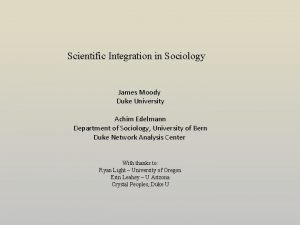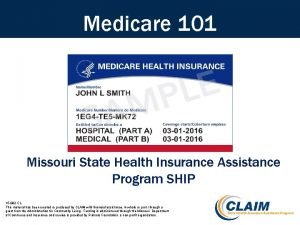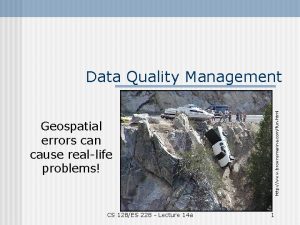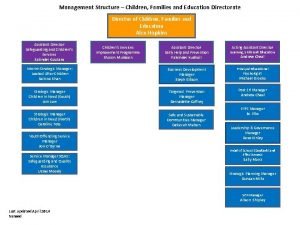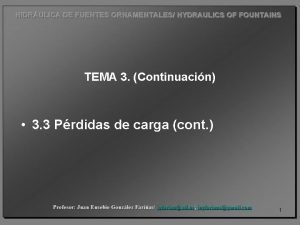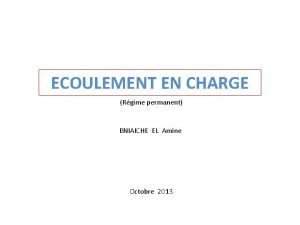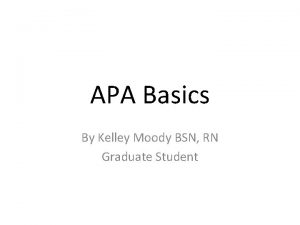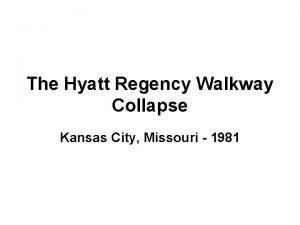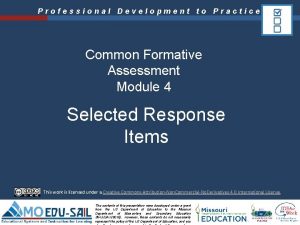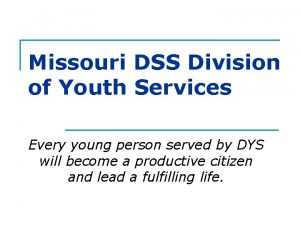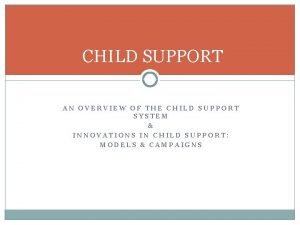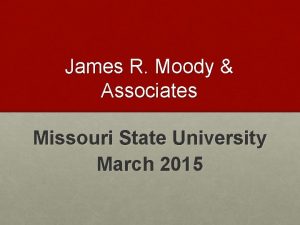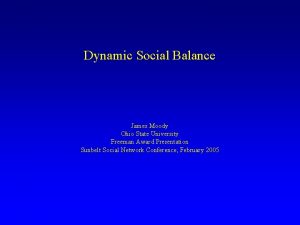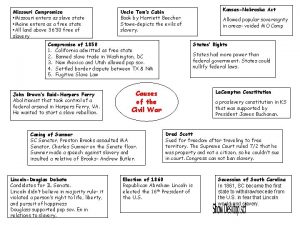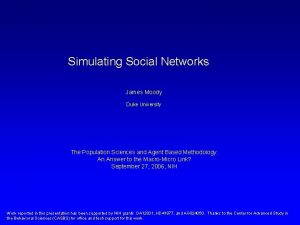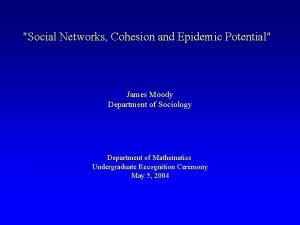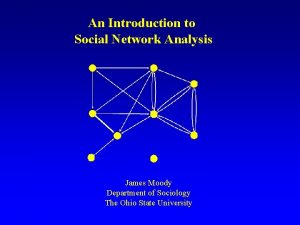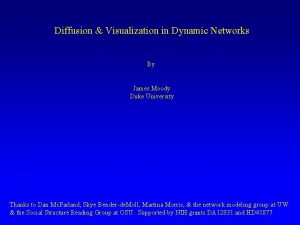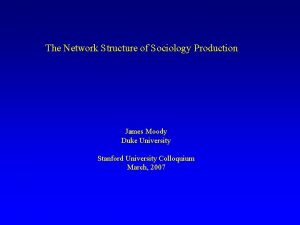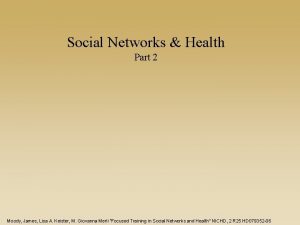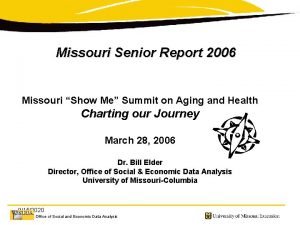James R Moody Associates Missouri State University March





































- Slides: 37

James R. Moody & Associates Missouri State University March 2015

Outside Data Sources • A presentation entitled “The New Normal” by Tom Gillaspy and Tom Stinson. • Missouri Population Pyramid slides from the State Demographer site, Missouri Division of Budget & Planning, Office of Administration. James R. Moody & Associates

Presentation OVerview • Missouri General Revenue Overview 101 • Education Funding History • The New Normal (Our Aging Population) • Legislative Changes To Our Tax System James R. Moody & Associates

COMPOSITION OF MISSOURI STATE BUDGET—ALL FUNDS Fund Percentage 31, 3% 32, 2% General Revenue Federal Funds 36, 5% James R. Moody & Associates Other Funds

Revenue Sources for General Revenue Source Percentage Individual Income Tax 67. 5% Sales Tax 21. 5% Corporate Income/Franchise Tax 5% Insurance Premium Tax 2. 3% All Other 1. 1% James R. Moody & Associates

Sales Tax HAS Been Flat For Over A Decade Net Sales Tax $2 500 000 $1. 925 B $2 000 $1. 75 B $1 500 000 $1 000 Net Sales Tax $0 1999 2000 2001 2002 2003 2004 2005 2006 2007 2008 2009 2010 2011 2012 2013 2014 $500 000

$9 $8 $7 $6 $5 $4 $3 $2 $1 $0 Combined Over $12 Billion Dividends Combined Only $4 Billion 20 00 20 01 20 02 20 03 20 04 20 05 20 06 20 07 20 08 20 09 20 10 20 11 20 12 20 13 Billions Missouri Income From Capital Gains and Dividends James R. Moody & Associates

Where Does General Revenue Spending Go? Elementary and Secondary Education $2. 94 billion Higher Education $856 million Corrections & Public Safety $687 million Human Services $2. 46 billion Judiciary $200 million General Assembly & Elected Officials All Other James R. Moody & Associates $90 million $1. 05 billion

K-12 Foundation Formula Funding Since FY 2008 Fiscal Year Foundation Formula Appropriation 2008 $2, 869, 115, 911 2009 $2, 983, 312. 456 2010 $3, 004, 388, 410 2011 $3, 004, 388, 410 2012 $3, 004, 388, 410 2013 $3, 009, 388, 411 2014 $3, 075, 271, 737 2015 ** $3, 175, 471, 739 **(Governor’s Released Amount)

Higher Education Funding Since FY 1996 to FY 2015 FY 1 FY 996 19 FY 98 2 FY 000 2 FY 002 20 FY 04 2 FY 006 2 FY 008 20 FY 10 20 FY 12 20 14 1000000 950000 900000 850000 800000 750000 700000 650000 600000 GR Funding (in thousands)

February 2015 Fiscal Year To Date General Revenue Receipts Category YTD Gross % Increase YTD Net % Increase (net of refunds) Individual Income Tax +6. 3% +5. 0% Sales Tax +3. 3% +4. 9% Corporate Income/Franchise +4. 0% +11. 8% Insurance Premium Tax +3. 3% +10. 1% Total Year To Date Source: FY 2015 Consolidated Revenue Report James R. Moody & Associates +4. 9% Net Increases are net of refunds paid

Our Aging Population Circa 1989 James R. Moody & Associates Circa 2010

Tom Gillaspy on AGing “There is a new theory in demography. It’s one of those math theories. Most of us age one year every twelve months. It’s a pretty regular process…. We are poised on a very enormous retirement boom unprecedented in history…We are an aging society. This has never happened before. ” James R. Moody & Associates -Tom Gillaspy, retired Minnesota demographer

The “New Normal” Probably Means • Creative destruction/disruptive innovation will change the way we deliver services • Chronic government deficits & cuts in service • Worries about how to pay for past promises • A whole new set of opportunities

The Number Of Americans Turning Age 65 Increased Sharply (25%) In 2012 Millions 4, 5 4, 0 3, 5 3, 0 2, 5 2, 0 1, 5 1, 0 0, 5 0, 0 2008 2009 2010 2011 US Census Bureau ACS; The New Normal 2012 2013 2014 2015 2016 2017

From 2015 To 2025 The US Will See Large Increases Age 60 s And 70 s Change in Thousands 85+ 80 -84 75 -79 70 -74 65 -69 60 -64 55 -59 50 -54 -2 497 45 -49 40 -44 35 -39 30 -34 25 -29 20 -24 15 -19 10 -14 5 -9 0 -4 -3000 1 018 2 269 4 853 5 207 3 944 2 002 -1 732 -459 1 879 2 970 2 430 227 -934 32 1 026 1 682 1 064 -2000 -1000 0 1000 Census Bureau projections, 2012; The New Normal 2000 3000 4000 5000 6000

By 2020 The United States Will Have More People 65+ Than School Age 90 000 80 000 Thousands 70 000 60 000 50 000 40 000 65+ 30 000 5 -17 20 000 10 000 0 0 198 5 0 5 0 5 0 198 199 200 201 202 203 204 Census Bureau forecast 2012; The New Normal

US Labor Force Growth Will Be At Record Low Levels By The End Of This Decade Annual Percent Change 3, 0% 2, 6% 2, 5% 2, 0% 1, 5% 1, 7% 1, 1% 1, 6% 1, 3% 1, 0% 0, 8% 0, 5% 0, 7% 0, 6% 0, 3% 0, 0% 50 -60 60 -70 70 -80 80 -90 90 -00 00 -10 10 -20 20 -30 30 -40 US Bureau of Labor Statistics forecast; The New Normal

Missouri’s Aging Population • Between 1950 and 2000, the 65 and over population grew by 85% to 755 thousand persons. • Between 2000 and 2030, this group is expected to grow an additional 87%, to 1. 4 million persons. • In 1950 in Missouri those over 85 represented onehalf of one percent of the population— 21, 000. • By 2000 those over 85 were 99, 000 persons—or 2% of the population. • By 2030, those over 85 will represent 2. 5% of the population, or 176, 000 persons. James R. Moody & Associates

What Is A Reason The Average Population Age is Increasing? Fewer Teen Pregnacies • Teen births in 2013 (274, 641) were the lowest number ever reported in the U. S. • The new record-low teen birthrate (26. 6 births per 1, 000 women age 15 -19) is a 10% decline since 2012 and a 57% decline since 1991. James R. Moody & Associates Lower Overall Fertility Rate • The birthrate for younger adult women fell to a record low of 81. 2 births per 1, 000 women aged 20 -24. • The general fertility rate slipped to a record low of 62. 9 births per 1, 000 women aged 1544.

The Rectangular AGe Pyramid in 2030 Year 2030 –By Age Group Percent of Population Cumulative Percent of Population Preschool 6% 6% Kindergarten to 8 th 11% 17% Grades 9 to 12 5% 22% Age 18 to 24 9% 31% Age 25 to 44 25% 56% Age 44 to 64 22% 78% Over 65 21% 100% Source: Missouri Office of Administration James R. Moody & Associates Cumulative is rounded to equal 100%

Missouri Population Pyramid of Missouri – 1900 Male and Female Combined 6 5 4 3 2 1 0 1 2 Percent of Total Population Missouri Office of Administration, Division of Budget & Planning 3 4 5 8 7 8 0 7 5 6 0 + 6 8 55 7 0 4 5 7 5 9 4 6 0 4 4 6 59 3 5 0 4 3 5 9 2 4 0 4 2 4 5 9 1 3 0 4 1 3 59 2 0 42 9 5 1 4 0 1 94 96 4

Missouri Population Pyramid of Missouri – 2000 Male 6 5 4 3 2 1 0 1 2 Percent of Total Population Missouri Office of Administration, Division of Budget & Planning 3 8 7 8 0 Female 7 56 0+ 6 8 55 7 0 4 5 7 5 9 4 6 0 4 4 6 5 9 3 5 0 4 3 5 9 2 4 0 4 2 4 5 9 1 3 04 1 3 5 92 0 42 9 5 1 4 0 1 94 94 5 6 4

Missouri Population Pyramid of Missouri – 2030 Male 6 5 4 3 2 1 0 1 2 Percent of Total Population Missouri Office of Administration, Division of Budget & Planning 3 8 7 8 0 Female 7 56 0+ 6 8 55 7 0 4 5 7 5 9 4 6 0 4 4 6 5 9 3 5 0 4 3 5 9 2 4 0 4 2 4 5 9 1 3 04 1 3 5 92 0 42 9 5 1 4 0 1 94 94 5 6 4

State Taxes Paid by a Married Couple Before and After Retirement (Minnesota example; The New Normal) Income Tax Sales Tax Total Change Pct Working $35, 000 $1, 236 $782 $2, 018 $65, 000 $3, 387 $1, 295 $4, 682 Retired @ 70 % $25, 000 $0 $45, 000 $1, 091 $559 -$1, 459 -72% $896 $1, 987 -$2, 695 -58%

Seemed Like A Good Idea At the Time!!! • Missouri’s experience will be worse than the Minnesota example. • House Bill 444, passed in 2007, phased out the state income tax on Social Security and public pensions over a six year period, ending in 2012. • As our population ages, Missouri will receive virtually no individual income taxes from elders receiving Social Security and public pension. • These same elders in their later years also purchase less goods that are subject to state sales tax. • The population pyramids spell bad news for future state budgets. James R. Moody & Associates

MO Healthnet Enrollees & Expenditures MO Health. Net SFY-2012 100% 90% 80% 70% 18, 7% 12, 1% 48, 5% ($3, 398. 0 M) In SFY-2012, seniors and persons with disabilities comprised more than 27% of enrollees, however, they accounted for nearly 66% of MO Health. Net expenditures. 60% Number of People SFY-2012 50% 17, 4% 40% 30% ($1, 218. 6 M) 60, 5% 8, 9% (Average Monthly) Persons With Disabilities (167, 367) Seniors (77, 460) ($626. 1 M) 20% 25, 2% 10% 0% ($1, 762. 1 M) Pregnant Women & Custodial Parents (108, 325) Children (540, 824) Total (893, 976) Percent of Enrollees (893, 976* Average Monthly Enrollees) Missouri Department of Social Services Percent of Expenditures ($7, 004. 8 M)

What Services Does Medicaid Pay For Because Medicare Does Not? • Skilled Nursing Care • In-Home Services, such as personal hygiene care, homemaker and chore services • These services are normally required for elderly people. James R. Moody & Associates

Tax Cut Legislation • Senate Bill 509 will be implemented over roughly the next 15 years. • It’s implementation will coincide with enormous demographic shifts due to the aging population. • With SB 509 in place, revenue growth would be very limited. • The aging of the population will make revenue growth even more limited. James R. Moody & Associates

The Basics of Senate Bill 509 • SB 509 includes a 25% reduction in “business income” in five increments of 5%, based upon triggers of $150 million “growth”. • “Business income” includes partnerships, S-Corps and LLCs. • SB 509 has no change in the tax rate for C-Corps. • SB 509 reduces the top individual income tax rate from 6% to 5. 5%, with five increments of. 1% each. This reduction is also based upon a trigger of $150 million “growth”. • The first reduction is deferred until 2017. James R. Moody & Associates

Senate Bill 509 • Senate Bill 509 has been characterized by its proponents as “broad-based tax relief”. • Is that true? Let’s examine which income segments pay the most income tax in Missouri. James R. Moody & Associates

Who Pays The Missouri Individual Income Tax? Missouri AGI % of Taxpayers % of Taxes Paid Under $50, 000 66. 8% 13. 6% $50, 000 to $75, 000 14. 2% 13. 9% $75, 000 to $100, 000 8. 6% 13. 2% Over $100, 000 11. 5% 59. 1% James R. Moody & Associates

The Way SB 509 Would Really Work • Drafters of the bill suggest that taxes would only be cut after growth. • This theory ignores the probability that growth would occur after a drop in revenue from previous downturns in revenue, such as after recent recessions. • Missouri’s revenues at one time were fairly stable. Not any more. Assuming that FY 2014 revenues are negative, Missouri would have had five negative fiscal years in the last thirteen fiscal years. James R. Moody & Associates

Recent Net General Revenue Growth Net GR (in billions) 8, 5 Negative 8 Negative Thousands 7, 5 7 6, 5 Negative 6 5, 5 Fi sc al Ye ar FY 98 FY 00 FY 02 FY 04 FY 06 FY 08 FY 10 FY 12 FY 14 5 James R. Moody & Associates Net GR (in millions)

Revenues Since FY 1998 If SB 509 Were In Effect Net GR (in billions) Triggers tax cuts Tax cut triggered Triggers tax cut Fiscal Year FY 98 FY 99 FY 00 FY 01 FY 02 FY 03 FY 04 FY 05 FY 06 FY 07 FY 08 FY 09 FY 10 FY 11 FY 12 FY 13 FY 14 FY 15 Thousands 9 8, 5 8 7, 5 7 6, 5 6 5, 5 5 Actual Net GR James R. Moody & Associates If SB 509 In Effect

Summary • The future of Missouri government will not be pretty. • Missouri has adopted ill-advised new tax policies at a particularly bad time. • The aging population will mean fewer workers paying taxes to support government programs. • Governmental revenue growth will be very limited, which means government will shrink. • The aging population will require more governmental services at a time when government spending will shrink. James R. Moody & Associates

Questions ? ? ? James R. Moody & Associates
 Achim edelmann
Achim edelmann Missouri state university
Missouri state university Anthem of poland
Anthem of poland Common core state standards missouri
Common core state standards missouri Missouri state health insurance assistance program
Missouri state health insurance assistance program Grammatical mood examples
Grammatical mood examples Friction factor for laminar flow
Friction factor for laminar flow Analysis
Analysis Abigail marsden
Abigail marsden To kill a mockingbird settings
To kill a mockingbird settings Moody tiger
Moody tiger George moody physionet
George moody physionet Hbomba
Hbomba Davina moody drama queen
Davina moody drama queen Direct reinforcement learning
Direct reinforcement learning Rayon hydraulique
Rayon hydraulique Diagrama de moody
Diagrama de moody Débit massique
Débit massique Difficult customer scenario
Difficult customer scenario Kelley moody
Kelley moody Russell odom and clay lawson
Russell odom and clay lawson James clayton lawson
James clayton lawson James madison university rotc
James madison university rotc James walsh brown university
James walsh brown university Missouri educators trust
Missouri educators trust Kansas city walkway collapse
Kansas city walkway collapse Drc insight missouri
Drc insight missouri Rap back program
Rap back program Missouri ignition interlock
Missouri ignition interlock Dys missouri
Dys missouri Missouri counseling lessons
Missouri counseling lessons Responsive services school counseling
Responsive services school counseling Missouri juvenile officer performance standards
Missouri juvenile officer performance standards Kansas child support arrears forgiveness
Kansas child support arrears forgiveness Missouri pta
Missouri pta The monroe doctrine what ideas did the measure contain?
The monroe doctrine what ideas did the measure contain? Western district of missouri us attorney
Western district of missouri us attorney Architecture and construction career cluster definition
Architecture and construction career cluster definition
